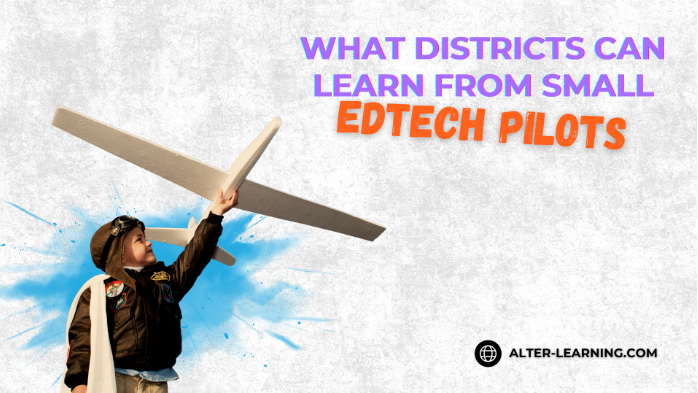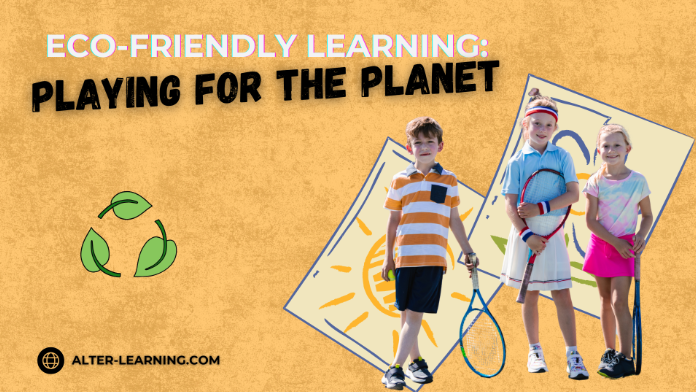Adopting new educational technology across an entire district can feel like a high-stakes gamble. Administrators must balance the need for innovation with concerns about cost, compatibility, and classroom impact. But successful innovation doesn’t have to begin with sweeping change. In fact, it often starts small.
By launching focused, well-structured pilot programs, districts can explore immersive learning tools, gather meaningful data, and scale solutions thoughtfully—without overextending resources or disrupting instruction.
Why Start with a Pilot?
EdTech pilots offer a safe, scalable way to test new tools in real-world conditions. Instead of investing in full deployment upfront, districts can observe how a small group of students and teachers interact with Alter-Learning’s platform, assess its alignment with curriculum goals, and identify challenges early.
Small pilots can help districts:
- Test compatibility with devices, infrastructure, and LMS platforms,
- Observe student engagement and learning outcomes firsthand,
- Gather teacher feedback on usability and instructional fit,
- Identify professional development needs before wider implementation.
This approach allows districts to make evidence-based decisions—building confidence among stakeholders and increasing the likelihood of long-term success.
Choosing the Right Pilot Environment
Not all pilot programs are created equal. The most successful ones begin with clear objectives and a strategic selection of participants. Whether the goal is to enhance STEAM education, increase student agency, or improve access to immersive content, identifying specific outcomes helps shape the pilot’s design and evaluation.
Effective pilot environments may include:
- A single school site with diverse classrooms,
- A subject-specific cohort such as science or math teachers,
- An after-school or enrichment program with room for experimentation,
- A grade-level team looking to integrate new digital tools into core subjects.
This targeted approach ensures that the experience is manageable while still offering insights that can inform district-wide planning.
What to Look For During a Pilot
A successful pilot isn’t just about whether students enjoy a platform—it’s about whether the tool supports learning, aligns with standards, and integrates smoothly into the classroom ecosystem.
During a pilot, districts may want to evaluate:
- Student engagement: Are learners interacting meaningfully with the content?
- Learning outcomes: Are students demonstrating understanding or skill growth?
- Teacher workflow: Does the platform support instructional goals or create new burdens?
- Technical performance: Is the tool stable, accessible, and device-compatible?
- Equity and inclusion: Are all students able to participate fully, regardless of need or background?
These insights help determine whether the tool meets both pedagogical and practical criteria for expansion.
Supporting Educators Throughout the Process
No EdTech pilot can succeed without teacher buy-in. Educators need support, time, and trust to experiment with new tools in a meaningful way. When districts provide structured guidance and open channels of communication, teachers can become champions of the innovation process.
Support strategies may include:
- Clear documentation on goals, expectations, and success criteria,
- Professional development sessions that connect pedagogy to platform features,
- Regular feedback opportunities through surveys or small group discussions,
- Technical support that’s timely and responsive.
By involving teachers as partners—not just users—districts can build internal momentum that supports long-term sustainability.
Educational transformation doesn’t always come from big, bold decisions. Often, it begins with a well-executed pilot: a small, strategic test of what’s possible. When districts approach EdTech adoption as a process of inquiry—not just procurement—they can uncover powerful tools that truly support student growth. With thoughtful planning, clear communication, and a willingness to learn alongside their educators, district leaders can build a path to scalable, sustainable innovation.
Follow Alter-Learning for more insights into immersive education, edtech success stories, and the future of learning. Want to explore how VR/AR could transform your school or learning platform? Let’s connect.




